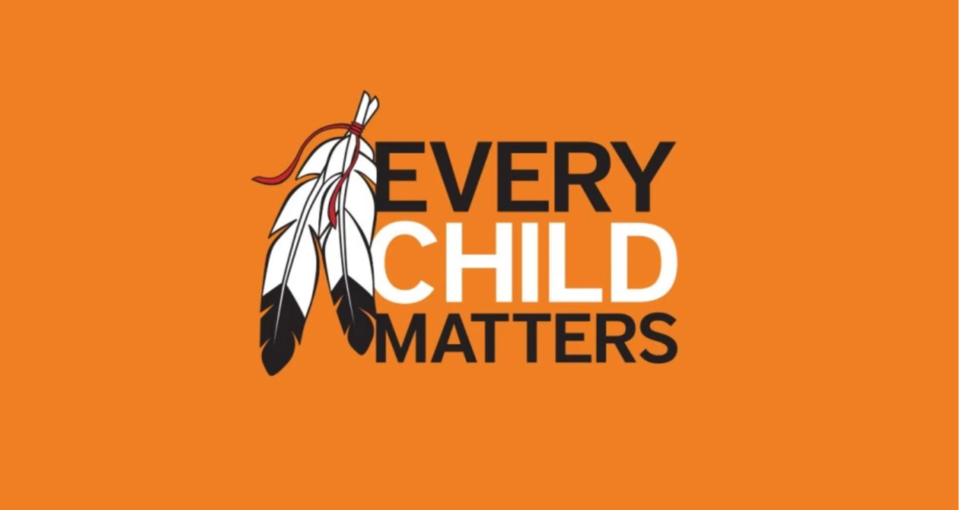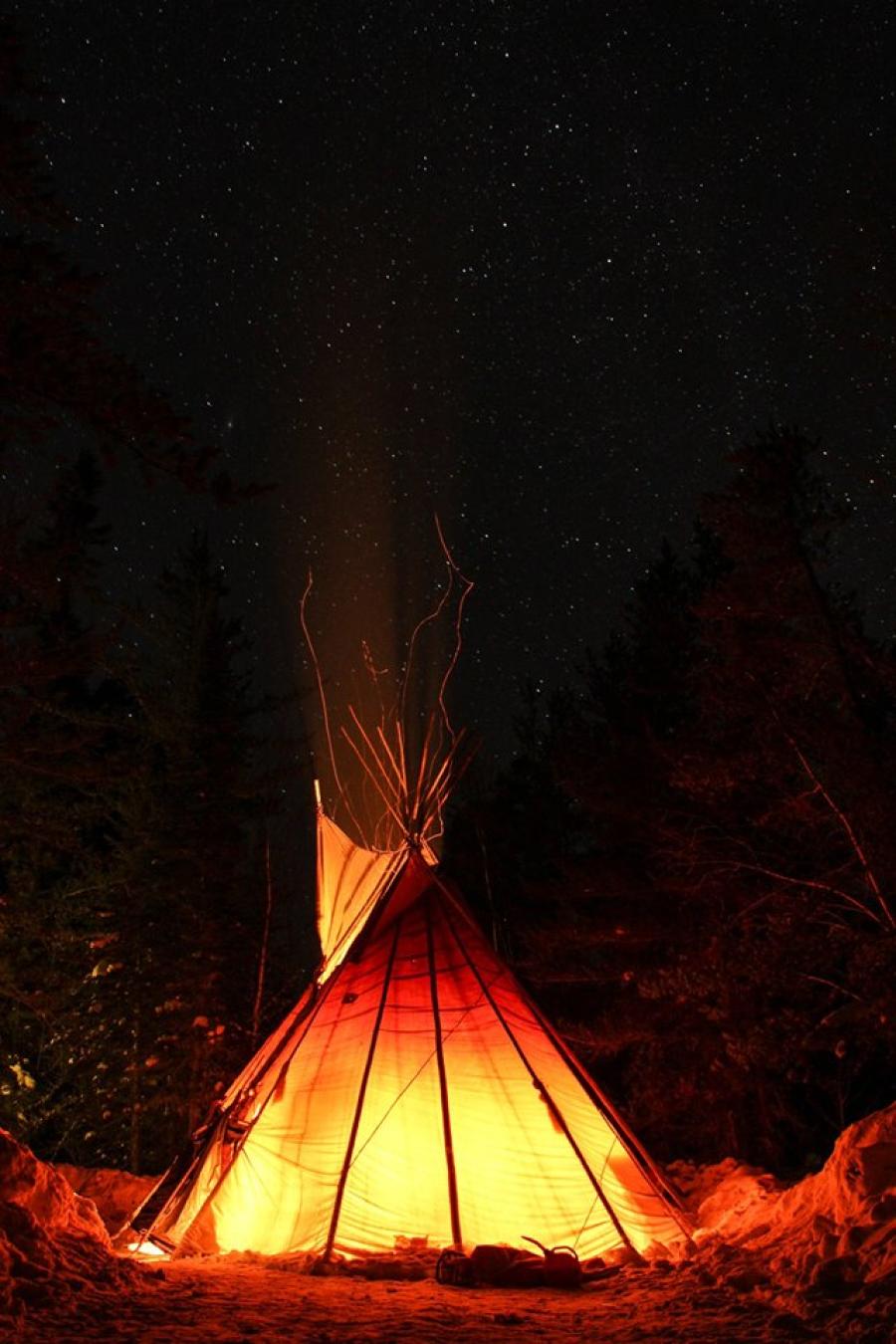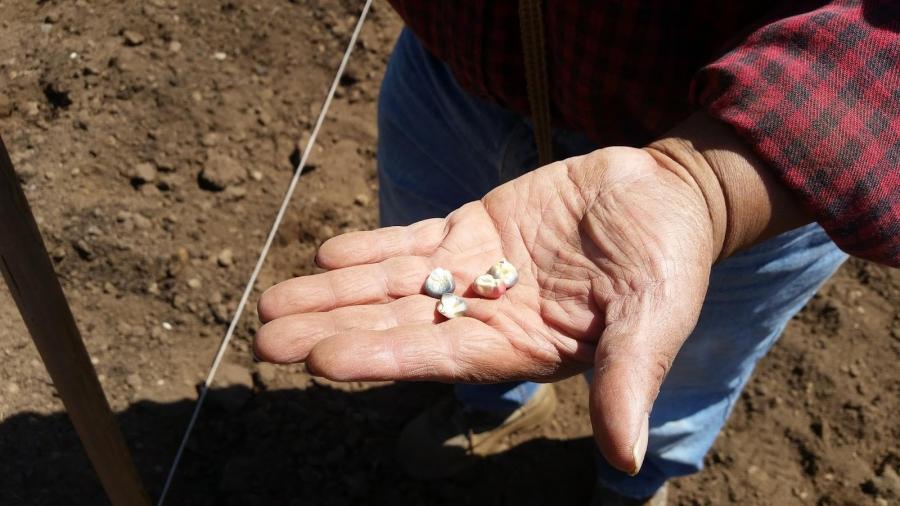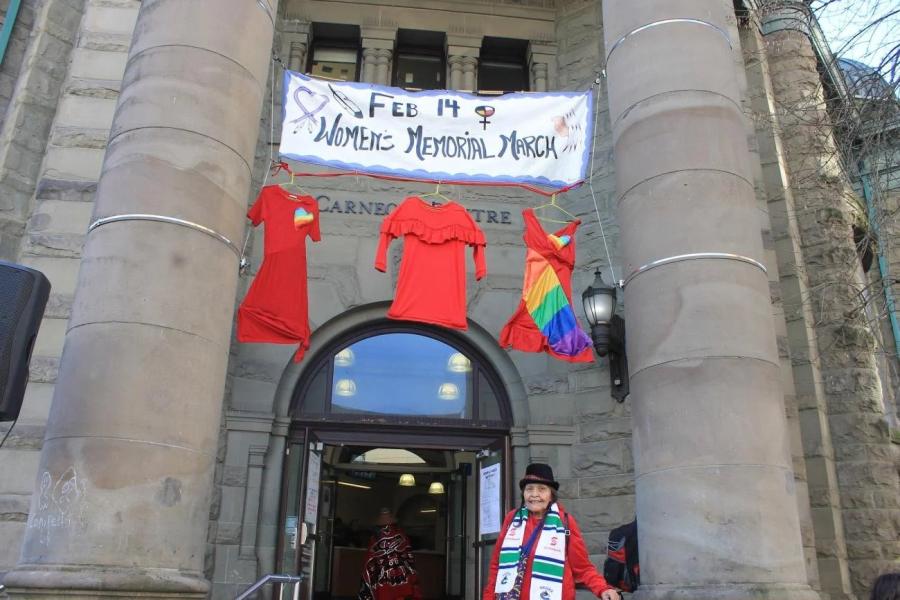
By Nati Garicia (Maya Mam, CS Staff)
On September 30, 2021, Canada will hold its first-ever statutory holiday observation of Orange Shirt Day, also known as the National Day for Truth and Reconciliation, to commemorate the missing and murdered children from residential schools and honor the healing journey of residential school survivors. Orange Shirt Day has been widely observed since 2013 to raise awareness about the residential school system and its impact on Indigenous communities for over a century.
The history of residential schools was cast into the spotlight with the discovery of the remains of 215 children in an unmarked gravesite near the Kamloops Residential School on Tk’emlúps te Secwépemc territories in British Columbia, Canada on May 27, 2021. The announcement of the findings triggered shock, trauma, and national mourning, drawing global attention to an ugly history from which many have shied away for decades. The news media uncovered layers of genocide by the perpetrators: governmental and religious institutions, along with their intentional dismantling of Indigenous identities to control retaliation of future generations. Residential schools are known as a dark history of Canada, but for many Indigenous Peoples, the repercussions continue into the present day. The uncovering of unmarked gravesites offers a mere glimpse of the impacts of genocide.
The purpose of residential schools was to separate Indigenous children from their families in order to weaken their cultural lineage and integrate them into a new colonial culture that formed Canadian society. In the 18th century, Canada's first prime minister, Sir John A. Macdonald, authorized the creation of the residential schools which continued well into the 20th century. The residential schools were not designed to educate, but rather the Canadian government used the schools as a means to strip Indigenous Peoples of their rights, dignity, and integrity, and to deprive them of access to their lands, cultures, languages and natural resources. The residential schools were not designed to educate. The last residential school closed in 1996, just 25 years ago.
The Kamloops Residential School was at one point the largest of all the residential school systems. It was located in the southern interior of British Columbia on the traditional territories of Tkemlúps te Secwépemc, known as Kamloops. Many of the students came from Indigenous communities across British Columbia, Alberta, and the Yukon. It was established in 1890 and operated by the Catholic Church until 1969, when the Canadian federal government continued operations as a day school up until 1978. The 215 children's remains discovered there included a child as young as 3 years of age. The discovery of a juvenile rib bone and tooth beneath an apple orchard near the school led to the investigation that ultimately uncovered the unmarked graves. According to Dr. Sarah Beaulieu, who headed the investigation, “All residential school landscapes are likely to contain burials and missing children.”
Memorial for children who died in the residential schools, Art Gallery Vancouver BC. Photo courtesy of Nati Garcia.
The staggering number of children’s remains that continue to be revealed reminds us of the much needed work in recovery and healing. These Indigenous children were not just numbers or statistics for Canadian history records; they were members of families, communities, and generations. In 2015, the Truth and Reconciliation Commission reported that 3,200 children died at the residential schools, but the location of half of these children is still unknown. Survivors recall more deaths, but no evidence is available for documentation. In 2019, the Commission released the names of the deceased children, however, only about 2,000 bodies had been identified.
Now, with the use of ground penetration radar (GPR), many Indigenous communities across Canada have begun conducting their own investigations of the residential schools. Of 138 residential schools, 11 have been investigated (Kamloops, BC; Brandon, MB; Fort Providence NWT; Muskowekwan, SK; Cowesses, SK; Ktunaxa Nation, BC; Penelakut, SK; Dunbow, AB; Battlefort, SK; and Winnipeg MB.) The use of GPR suggests the remains of more than 5,000 children are scattered among these 11 sites. This does not include the number of children who disappeared without a trace. Survivors recall memories of dear friends and siblings running away during cold winters, possibly freezing to death, drowning by the river, being run over by trains, or dying in the woods for lack of water or food. The children that did not make it back home are marked as missing. These children were members of Nlaka'pamux, Okanagan, Secwepemc, Chawathil, Sto:lo, Inuit, Squamish, Musequeam, Tsliel-Waututh, Sekw'el'was, Kwakwaka´wakw, Anishinaabe, Cree, Ojibway, Metis, Nêhiyawak1 (Plains Cree), Nahkawininiwak (Saulteaux), and Mohawk Nations, hailing from distinct Tribes, cultures, and traditions throughout the landscape of Turtle Island.
Rosalin Sam-Edmonds (Lilwat Nation).
Rosalin Sam-Edmonds (Lilwat Nation) details her experience in Williams Lake, where she was invited to attend the opening ceremony of the GPR investigation of St. Joseph’s residential school, which she and her siblings attended.
“The whole research is a new experience to all...[it] was difficult to make decisions on the invitees, and they even had to turn people away because they had already reached the limit of 50 people. The ground crew who are doing the research there brought their machines, and Chief William had the machines smudged along with the workers. It was a very touching ceremony because of the trust that was built around the whole project. The work crew took the time to introduce themselves and told us how the machines work...Prayers were said by elders, speeches were made by leaders, songs were sung.
I was invited to close the ceremony with a song after my speech of when I attended the school and what I learned from the people of the area; learning to survive eating dried berries, juniper, rose hips, and cactus, [it was] them teaching me to survive that made us family. We sang the Women's Warriors song after acknowledging Elder Martina Pierre, where the song came from, for all the moms, grandmas, dads, and grandpas who shed tears for the lost children who didn't make it home from the residential school, and the tears they shed when we were leaving to go to these schools. I invited all who wanted to sing to join me—Martina's grandnephew was there and he joined in the song—we sang with all of our hearts, our minds, our souls for our ancestors. It was powerful. It was strong. We made our ancestors happy that we thought of them during this research of their lost babies.
Then we met with the research crew back at the office and told them stories of incidents we saw during our stay in the school. They had pictures of the old school and maps of the area; it's all torn down and ranchers live there now. We pointed out areas where there might be graves and told our stories of things that happened to us in the school: the beatings, the sexual abuse, the starvation, the attempts to run away. How we arrived and left the school, walking across the fields and creeks to reach the train tracks during the dead of winter in the north wind. We told our story as it was. The truth, as a family. Thank you to our sister, who came as support, and for our driver for getting us there and back safely. It was a long, tiring trip, very emotional, but our story is going to go down in history for all to know what happened to us in those mission schools run by priests and nuns who were hired by the government to break us and to take the Indian out of us. But we are people of the land, so it didn't work for them. it made us stronger, it made us better fighters, it made us survivors. Blessing to my brothers and sisters who went to the residential schools. Blessings to all the families that followed. Stand tall, stand strong, like we can.”
Four generations of an Indigenous population lost, which has a direct impact on the transmission and retainment of culture, language and traditional knowledge amongst Indigenous communities in Canada. A history of such violent genocide has long-term effects for Indigenous communities, and many of the stories go untold and unheard. Many residential school survivors hold stories that went undocumented by the Truth and Reconciliation Commission. The torment of holding and internalizing such memories is unfathomable for a non-Indigenous settler in Turtle Island. This knowledge has always been there; the recent uncovering of the gravesites is just a validation of the knowing and shared experience of survivors and relatives who are no longer with us in physical form. It is now known that what happened in the residential schools were crimes of genocide and there needs to be accountability. Many Indigenous communities are seeking justice for the crimes committed against their loved ones. An apology from the Canadian government and local churches is not sufficient. The magnitude of what survivors have to cope with, the painful reopening of the wound, the flood of memories, is ongoing. Having access to health services, prevention outlets, ceremony, traditional medicine, and land is essential. When a spirit is harmed, it requires delicacy, compassion, patience, and an abundance of unconditional love to soothe the wounds.
The spirits of the children who did not receive the medicine of their ancestors and loved ones have now come forward. The spirits of the children in the unmarked graves have always been searching for the voices of their loved ones to liberate them, entering into dreams, roving in the material dimensions unnoticed. But if you listen deeply, you can feel, hear, and even see their hues, leading their unmarked graves to be visible. Many Indigenous communities have shared stories of hearing unfamiliar sounds coming from the residential school premises. For many Indigenous communities, the familiarity with connecting to the spiritual realm and communicating with our ancestors is very close to our hearts, bodies, mind, and spirit. The deep network of roots traversing these realms is profound.
Ceremony is a vital component in the healing journey, and being able to offer a ceremony to all the children found or not found during their term in the residential schools is important so that they may have the passage into the spiritual dimension, to transcend the Earth plane into the universe, uniting with the ancestors and reconnecting with loved ones in the material world. The banning of these ceremonies was one of the colonial government’s efforts to destroy Indigenous culture, but it was not enough. For this reason, residential schools were created to break the lineage of knowledge systems and ceremonial traditions, both of which are tools of collective healing. Shortly after the closure of the residential schools, the infamous “Sixties Scoop” occurred, taking yet another generation of Indigenous children and youth further from their Indigenous roots.
So, then, why are non-Indigenous people of Canada surprised and shocked by the staggering number of deceased children? Since the Truth and Reconciliation Commission report was released, there was denial by Canadian citizens or religious institutions. This denial has redirected the truth of the residential schools as a means to protect the status quo of guilty parties and undermined the painful experience of Indigenous Peoples in residential schools. This avoidance of truth skewed many non-Indigenous people from understanding the history of Indigenous Peoples in Turtle Island, putting reconciliation at risk. Since the Commission was cautious and discreet about the documentation of deceased children, the full magnitude could not be measured, thereby maintaining protection of churches and governmental assets. The Catholic Church has been reluctant to provide any records requested by Indigenous communities. No true accountability has been taken from the Canadian government yet or have taken adequate measures to address the long history of genocide that continues to take place today in Canada.
A handful of non-Indigenous settlers have stood in solidarity with Indigenous communities. There are several other new and ongoing investigations taking place across Canada, and there are over 6,000 remains that have been found to date - that number is expected to continue to rise as more investigations occur. On September 30, recognized as Orange Shirt Day across Canada is marked as a national day of remembrance to honor residential school survivors, families, and communities. This is the first time a national remembrance has been declared to commemorate the legacy and is a reminder of Canadian history. It will also be marked as a month of education and awareness to share resources, experiences, and healing.
There is still more work needed before taking steps towards true reconciliation. Many Indigenous land defenders continue to be targeted and threatened, and the remaining two percent of old growth trees on unceded territories are at risk. The Indigenous youth suicide rate is three or four times higher than that of non-Indigenous youth, and over 50 percent of Indigenous children and youth are in the foster care system and institutionally separated from their lands, communities, language and culture. Many Indigenous communities still do not have access to fresh water, and corporations responsible for contamination due to fracking and mining are not held accountable. The epidemic of Missing and Murdered Indigenous women, young girls, and Two-Spirits (MMIW2S) continues. The incarceration rates and deaths from drug and alcohol abuse is also the highest amongst Indigenous populations. All of these are repercussions of the residential schools and colonial systemic genocide.
The Commission’s report contained 94 calls for action, but so far—6 years after its publication—only 9 have been completed. The Canadian government must implement the remaining 85 calls to action from the report and adopt and comply with principles of the United Nations Declaration on the Rights of Indigenous Peoples. Canadians can contact their Members of Parliament and local government representatives demanding concrete action. Funding is also a way to support Indigenous communities by donating to programs, services, projects, actions, and Indigenous-led activism.
Memorial for children who died in the residential schools, Art Gallery Vancouver BC. Photo courtesy of Nati Garcia.
Every year on September 30, people across Canada wear orange and participate in Orange Shirt Day events to recognize and raise awareness about the history and legacies of the residential school system in Canada. Orange Shirt Day originates from the story of Phyllis Webstad from the Stswecem'c Xgat'tem First Nation. The day of remembrance is now commonly observed in the United States as well in remembrance of survivors of the residential school system in the country.
Below are a few organizations working on this issue in Canada:
Indian Residential Schools Survivors Society
National Center for Truth and Reconciliation



